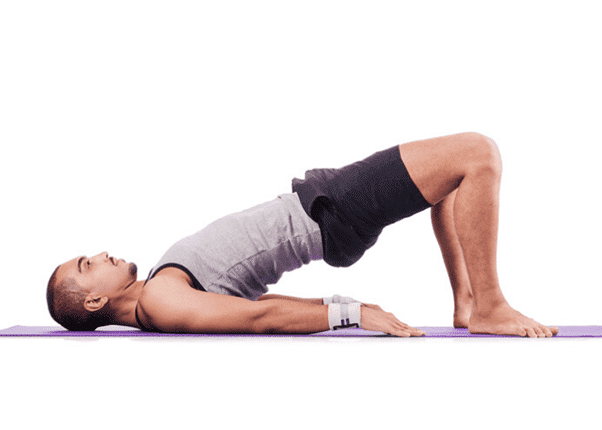Things Most Important Of Kegels Exercise
Kegels exercises to make pelvic floor muscles more powerful are not just for women. Kegel Exercises for men, when included as part of regular life, can keep the body healthy. That is because the pelvic muscles support the bladder and bowel and impact intimate performance. You can quickly learn Kegel exercises for men step by step.
Analysis at the University of West of England in Bristol found that pelvic floor exercises helped 40% of the participants regain normal erectile function and supported an additional 33.5% significantly improving their erectile dysfunction.
Also, studies found Kegel exercises developed erectile function (ED) and help with premature ejaculation (PE) and leaking after urination. The study suggested pelvic floor exercises be the first-line technique for men seeking long-term ED or Impotence resolution.

What are Kegels?
Kegels strengthen pelvic floor muscles and support pelvic organs.
What are the pelvic floor muscles correctly, you may ask? You can visualize them like a hammock that holds your bladder, rectum, female/male organs, and small intestines in place. When these muscles weaken, you can have bladder and bowel incontinence and pelvic organ prolapse.
The pelvic floor muscles are the ‘hold it’ strengths. Almost everybody has experienced the uncertain condition of emptying their bladder or bowel until a restroom is available. When this happens, people naturally contract their pelvic floor to inhibit distracting, accidental leakage. It is consciously doing these pelvic contractions to strengthen these muscles.
Can Kegels also help men?
Kegels can help with male urinary incontinence. And there’s some evidence to recommend that pelvic floor muscles are helpful in erectile function during intimacy. Similar factors, other than pregnancy, of course, influence men’s pelvic floor muscles: a chronic cough, constipation, being overweight, and some medical conditions can lead to issues with the pelvic floor muscles. Treat your ED problem by using Tadalista and Sildalist remedies.
How do I find the proper muscles to do Kegels?
So now you’re convinced you can benefit, and you need to start now!
First things first, you require finding the right muscles. You do this by tightening the muscles that stop you from passing gas or stopping urination midstream. These are your pelvic floor muscles.
A great Kegel exercise provides you isolate the pelvic floor and don’t flex any other muscles like the buttocks, thighs, and stomach.
Leave them out of it!
How to ‘Kegel’
First, talk to your expert before you try Kegel exercises. They work well for most people, but a subset of folks with pelvic floor disorders for whom, ironically, may be harmful. Once you have your doctor’s permission, you’ll be required to “locate” your pelvic floor muscles.
There are several methods, but the simplest is while urinating. While peeing, try to stop the flow by clenching the tissues around your urethra. You’ll also want to grasp around your anus as if trying to hold on flatulence. Feel those muscles that are tightening? Those are your pelvic floor muscles.
If you’re having difficulty finding them, try placing a finger or two behind your testicles in front of your anus while stopping the flow of urination. You should feel the muscles contracting. OK, no need to do that again. Your body doesn’t like you interrupting urination, but now you’ve found these essential muscles.
Flex that muscle and no other, not your glutes, your abs, or anything else. To perform Kegels, contract those pelvic floor muscles, release them, and then repeat. Contract and release for several four each. You can also explore variations in speed—complete three sets of 10 reps, expect results within a few weeks to a few months.
The Effect of Kegels and Pelvic Floor Exercises for Men
While most people think that Kegels only benefit women, they’re essential for men’s urologic health as well. Kegels and pelvic floor exercises can help protect the prostate gland when the pelvic floor muscles are reducing following surgery. Doing pelvic floor exercises will help to give you better control of your bladder and urine flow, but it takes time. Increasing the pelvic floor will also help you manage prostate pain from benign prostatic hyperplasia, fight symptoms of overactive bladder, and enhance overall reproductive health.
In most cases, you can gain regulation of urinary desire within 9 to 12 months after prostate surgery. However, everyone is different, and healing time will differ. Stay steady and talk to your doctor about any concerns or problems you’re experiencing.
When Can You Expect Results?
Medical experts say that a daily program of nine minutes a day, every day, will yield positive results in as early as two weeks. Some impacts of your extended muscle strength, such as less frequent urine leakage, will occur first. In contrast, positive effects on your ability to achieve and maintain an erection can appear within six to sixteen weeks.
If you exercise daily, spreading the 9-minute workout over the day for several months, yet don’t see results, don’t despair. Your doctor may recommend biofeedback to train you and your muscles to exercise most effectively.
In this type of biofeedback, your doctor places a sensor into your rectum, and then, as you relax and reduce your pelvic muscles, a monitor shows how powerful your actions are. It can help you maximize the workout by targeting the right muscles.
Including Kegels into Your Routine
There are some simple ways to include Kegels into your routine:
- Do a set of Kegels when brushing your teeth in the morning and one set when you touch them at night.
- Contract your muscles when using your abdomen, such as lifting something heavy, laughing, coughing, or sneezing.
- Add Kegels to your daily workout routine; for example, do them when you do sit-ups or squats. Also these exercises reduce men’s health problems like ED, Impotence. Treat your male impotence problem by using Prejac 60 and Fildena 150.
Key Takeaways
Like any other muscle, extended use and exercise can help improve bodily functions and wellbeing. Though Kegel exercises for women are very experienced, these exercises for men are still gaining traction. While other exercises require time, equipment, and commitment, they can be done in just a few minutes while providing several health benefits.

